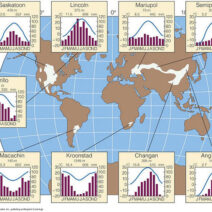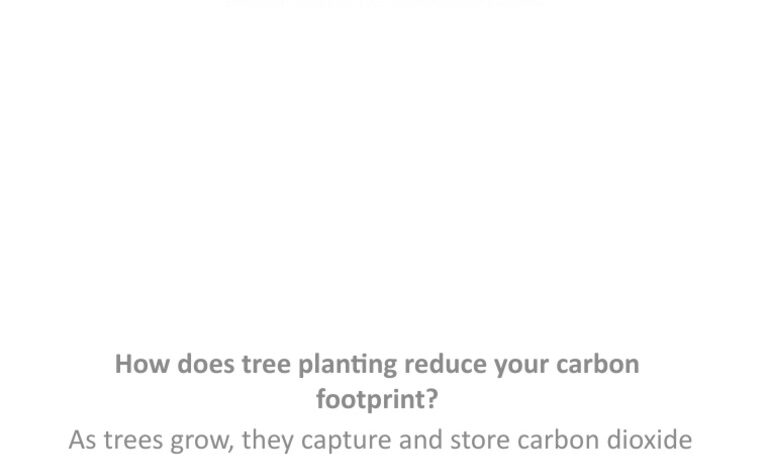In an era characterized by the perils of climate change, the role of trees and vegetation in moderating global temperatures cannot be overstated. Forests, often referred to as the lungs of our planet, epitomize nature’s resilience and its ability to combat the deleterious effects of anthropogenic greenhouse gas emissions. This piece elucidates the mechanisms through which planting trees can substantially mitigate global warming and explores the multifaceted benefits of afforestation.
First, it is essential to comprehend the fundamental process of carbon sequestration. Trees absorb carbon dioxide (CO2) during photosynthesis—a process where they utilize sunlight to convert CO2 and water into glucose and oxygen. This remarkable ability allows trees to act as carbon sinks, capturing and storing atmospheric carbon. As trees mature, they accumulate significant amounts of carbon in their biomass—including trunks, branches, leaves, and roots—thus reducing the overall concentration of greenhouse gases in the atmosphere.
Tree planting initiatives, particularly in deforested areas, can yield substantial carbon storage over time. For instance, restoring degraded landscapes with native tree species facilitates not only carbon sequestration but also enhances biodiversity, soil quality, and water retention. Such actions exemplify a restorative approach to land management where ecological integrity is prioritized.
Secondly, trees mitigate global warming by influencing local climates, primarily through the regulating properties of transpiration. When trees release water vapor through their leaves, a cooling effect is produced—a natural air conditioner that can significantly alter microclimates. This process is particularly vital in urban areas, which often suffer from the heat island effect, where built environments become markedly warmer than surrounding rural areas. Urban afforestation can ameliorate these temperature discrepancies, enhancing the livability of cities and reducing energy consumption associated with air conditioning.
Moreover, the presence of trees can modify wind patterns and reduce the intensity of storms. By serving as natural barriers, networks of trees can mitigate gusts and shield vital infrastructure from storm damage. This protective aspect of trees is increasingly relevant as extreme weather events become more frequent and severe due to climate change. Planting trees strategically can contribute to resilience against such climatic adversities.
Additionally, it is pivotal to consider the symbiotic relationship between trees and other ecological systems. Tree canopies provide essential habitats for myriad species, promoting biodiversity—the backbone of resilient ecosystems. Increased biodiversity not only enhances ecosystem productivity but also facilitates the stability needed to withstand environmental changes. Healthy, biodiverse ecosystems are better equipped to sequester carbon and offer additional environmental services such as pollination and pest control, further contributing to climate change mitigation.
The economic implications of tree planting efforts are also noteworthy. Transitioning to a greener economy necessitates investments in sustainable practices, and forestry can play a crucial role in this transition. Sustainable timber production, agroforestry, and ecosystem services derived from forests contribute to local economies while simultaneously fostering environmental stewardship. For many communities, the cultivation of trees can result in both job creation and improved ecosystem health, creating a win-win scenario.
Furthermore, community engagement and education are instrumental in amplifying the impact of tree planting. Mobilizing local populations to participate in afforestation projects cultivates a sense of ownership and responsibility towards the environment. Educational programs that delve into the importance of trees in mitigating climate change can foster an ecological consciousness among individuals, prompting lifestyle changes that support sustainability. Through greater awareness, communities can unite efforts, advocating for policies that prioritize green space and tree planting as a fundamental aspect of urban planning.
Despite the myriad benefits associated with tree planting, certain challenges must be acknowledged. Monoculture plantations—areas where a single tree species is cultivated—can lead to ecological imbalances. To avoid this pitfall, reforestation endeavors should prioritize native species that enhance local biodiversity and ecological integrity. Furthermore, the logistics of tree planting, including choosing appropriate sites and maintaining saplings during their early growth stages, require careful planning and execution.
Technological innovations also play a transformative role in enhancing the efficacy of tree planting campaigns. Drones and satellite imaging allow for the identification of areas in need of reforestation and enable monitoring growth patterns over time. Such advancements facilitate data-driven approaches to afforestation, ensuring that resources are allocated efficiently and that outcomes are measurable.
In conclusion, the power of green is not merely a slogan; it is a call to actionable strategies that can significantly mitigate the pressing issue of global warming. By planting trees, we harness nature’s innate ability to sequester carbon, regulate microclimates, and enhance biodiversity. Each tree planted represents a step towards a sustainable future, fostering resilience in ecosystems, economies, and communities alike. It is imperative that individuals, organizations, and governments recognize the profound impact of trees and commit to integrating green practices into the fabric of our societies. The time for action is now; our planet depends on it.








